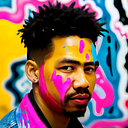‘Mampor’: The Origin Tale of Cebu’s Most Mysterious Man
As a true-blue Cebuano, I always encounter passive comments wherein most people would say its something in our history that so distant they refer it to an anonymous guy named “Mampor.” Old people would say, “Panahon pa man na ni Mampor.”
So who is this elusive guy that people would keep mentioning him when they talk about something so old and archaic yet they can’t definitely tell when was it? Of course, tall tales abound that talk about its origin story. It’s more intriguing than what you see on blockbuster superhero movies like that of the “Avengers” or “Justice League.” It’s so common and every day that you think you know but you’re not really sure at all!
Who is ‘Mampor’?
There is a real historical figure behind this tall tale and his name is Captain Joaquin Monfort. He first appeared in official records in 1896 when he was assigned to Cebu during the early years of the emerging revolutionary movement against Spain. He faced the Katipuneros led by Pantaleon Villegas, the man most people known as “Leon Kilat.” There is one version of this tall tale that is more likely, his surname got corrupted and evolved into “Mampor” as most of the Katipuneros were illiterate and won’t be able to pronounce his name clearly.
After several years of residing in the city, Monfort had reached a level of social respectability within the community. Being a high-ranking officer in the Guardia Civil, Monfort was appointed to the post of alderman of the ayuntamiento in 1896. Being a prominent Spanish and key city official, Monfort was a highly-visible personality and well-known by urban residents of Cebu.
Fray Pedro Medina, the parish priest of San Nicolas, has informed Gen. Montero that the Katipuneros are on their way to besiege and attack Guadalupe. To prevent this from happening, he ordered Capt. Monfort and fellow officer Ciriaco Gutierrez to form a force composed of a mixed company of soldiers — guardia civil, carabineros, cuadrilleros, voluntarios, and vigilantes — to face the rebels.
There were also loyal Cebuanos who supported Monfort and his men. Many of these men have prominent surnames you know by now like Jose Atillano, Eduardo Lopez, Manuel Maldonado, Arsenio Climaco, Apolinar Kabilbil, Godofredo Lago, Simeon Padriga, Pedro Sanson, Juan Borres, and Raymundo Enriquez. They were instructed by Gen. Montero to find out what the people were gathering for.
Gen. Montero’s loyalist troops of mixed units arrived at the Puente de la Revolucion (south end of Colon Street) and then reorganized into two groups with one led by Capt. Monfort, who proceeded to Calle Valeriano Weyler (Tres de Abril Street), and the other led by Capt. Gutierrez, who proceeded to El Pardo (C. Padilla Street). The pitched battle was furious but the loyalist troops were eventually repelled by vicious Katipunero attack. They soon retreated back to the Puente de la Revolucion where the other loyalist unit performed an effective rear-guard action to protect the entire force from being annihilated. That disastrous battle was eventually attributed to Monfort so that his name would bear that term “Mampor” to refer to an ignominious defeat or massive failure pushed to the dustbin of history.
One of the possible reasons for such defeat is because of the inability of Gen. Montero to coordinate his disparate units composed of local loyalists and volunteers from other provinces. Furthermore, some may say that some men were disgruntled because of the delayed payment of their dues. It is also compounded by the fact that most of the civilian population have started to shift their allegiance to the revolutionaries.
Cultural Impact of ‘Mampor-ism’
The lasting impact of this Mampor-ism is that some people from our current generation are losing their interest in anything in the past. It’s quite interesting when you think about history — it is written by the victors and not the vanquished.
Clearly, Monfort has a certain reputation that he became the man he hated the most. He was so cruel and ruthless that most people even hated him than his commanding officer of the Guardia Civil named General Adolfo Montero. His reputation gave birth to this anonymous persona that anything so old came from his time. How it came to be was lost in time.
In due time when the news and popular media refer to something that failed big time because it was so antiquated and outdated, it was Monfort’s time gets to be blamed when things go wrong. Depending on what perspective you believe and what side you support, Monfort is like any person put in a very difficult decision that would do what he can to survive. By that time, it was already a tumultuous period when Cebuanos started to rebel against Spanish colonial rule.
People are quick to forget about the last few decades of Spanish rule that they tend to lump that ignominious end to Monfort’s folly. The ‘old regime’ — best described as an era that ended in a conspiracy and violent rebellion that led to much death, destruction, and dislocation — is personified under that “Mampor” reference. More than a century later, people have forgotten that period in history and only the term that personified it.
We end up forgetting the history of Cebu during that tumultuous period and inadvertently forgetting the revolution that kicked the Spaniards out of the island. Now, Leon Kilat, General Arcadio Maxilom, and other heroes of the revolution are all forgotten thanks to “Mampor.”
This article was originally published on my website.
Looking for a copywriter or blogger who can write articles on a wide variety of topics? Send me a message for more information.
